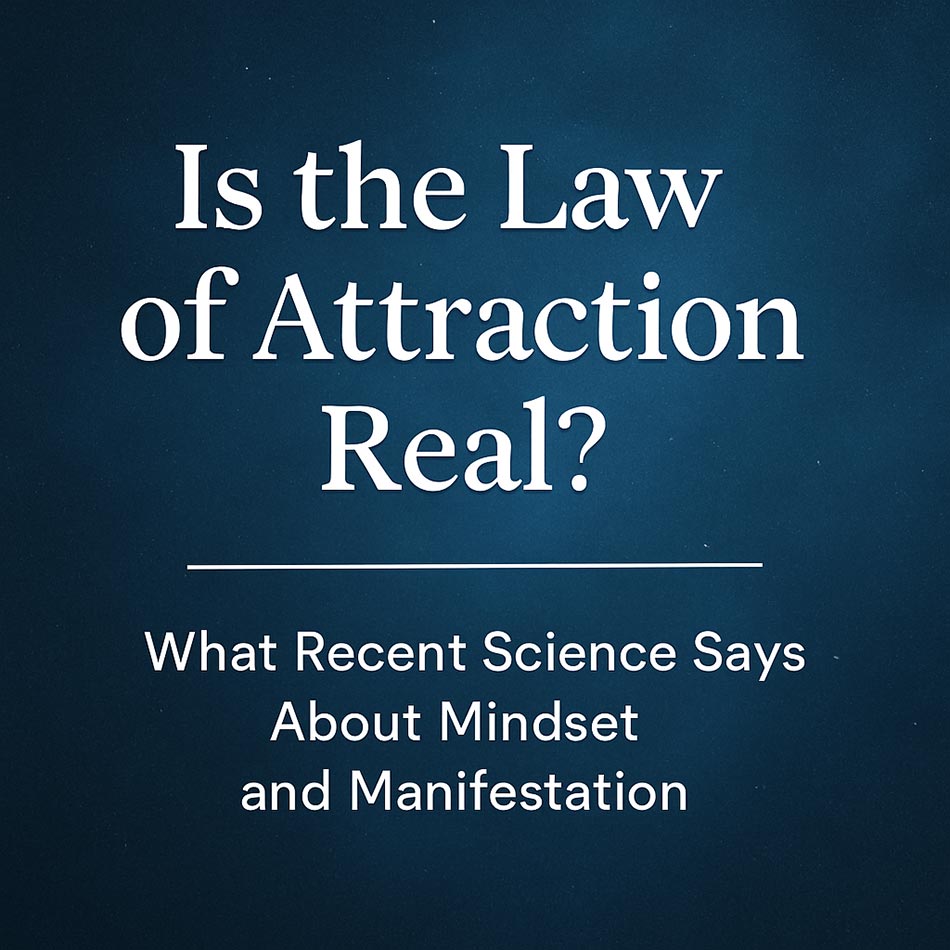In recent years, the Law of Attraction—popularized by books like The Secret and celebrated by celebrities such as Oprah Winfrey and Drake—has often been dismissed as spiritual fluff. However, some researchers are now reframing manifestation as a cognitive neuroscience strategy, not superstition. One of the most compelling advocates in this emerging movement is Stanford neurosurgeon Dr. James Doty, whose approach blends mental practices with hard science.
🧠 From “Woo‑Woo” to White Coats
On a January episode of the Mel Robbins Podcast, Dr. Doty laid out a methodical, science‑based process for manifestation: write down your goal, read it aloud and silently, visualize it vividly, repeat regularly—and then, take action. His message: “there is no magic here”—this is basic neuroscience, not mysticism 13verywellmind.com.
Doty explains that by engaging all your senses—handwriting your goals, speaking them, visualizing them—you embed intentions into the subconscious, neurobiologically shaping the brain. Specifically, he highlights how this engages the default mode network (DMN), which governs introspection and self‑narrative creation .
Once a goal becomes salient—tagged as “important” by the DMN—it activates the brain’s attention network. Doty likens it to a bloodhound sniffing out your intention: “Once that attention is focused… your executive control network… chases down what is in your subconscious”.
In short: manifestation primes the mind to see and seize opportunities, but action remains essential.
🔄 Manifestation Works Best with Feedback
Manifestation isn’t just about having a wish—it’s about building a feedback loop:
- Set and embed your intention through writing, speaking, and visualization.
- Notice opportunities—you’ve trained your brain to focus.
- Act—take real steps toward your goal.
- Reflect and adjust—fine-tune based on real-world outcomes.
Doty dismisses the idea that one can simply “think” something into existence. His protocol is sensory, intentional, and rooted in neurobiology, not mysticism.
💡 A Therapist’s Take: Psychology Meets Manifestation
In alignment with Doty’s approach, a recent examination by Verywell Mind delves into the popular 17‑Second Manifestation technique—a TikTok trend where users visualize a goal for 17 seconds each morning, pairing it with affirmations like “I can trust my gut”.
Licensed therapist Kim Slipski found the method helped her gain clarity and emotional calm—even while remaining skeptical. Her takeaway? Visualization can prime the brain to be alert for solutions—but it doesn’t replace follow‑through.
The lesson: manifestation provides psychological readiness; action delivers results.
📈 Cultural Take: From Vision Boards to Viral Trends
A Wall Street Journal piece revealed that “manifesting” exploded in 2024, with the word being named Word of the Year by Cambridge Dictionary. Vision boards, journaling, and repeating affirmations have become mainstream goal‑setting tools.
Still, experts caution that action must accompany intention. In one highlighted story, a student who manifested college acceptance still had to apply, interview, and meet entry requirements.
Even celebrated endorsements—from Dua Lipa to Oprah—are less about magical thinking than about goal clarity and disciplined follow‑through.
🧩 Bridging Science and Spiritual Practice
Neuroscience and cognitive psychology increasingly support Doty’s framework of purpose‑driven intention, sensory encoding, and attention alignment:
- Research on neuroplasticity confirms that mental practice strengthens neural pathways, changing how we perceive possibilities.
- Studies show that visualization activates the same brain regions engaged in real performance, boosting motor skills, emotional regulation, and memory .
- Neurochemical research points to dopamine supporting motivation, serotonin emotion regulation, oxytocin social trust, and reduced cortisol improving cognitive flexibility—all outcomes of intentional practice.
These insights reposition manifestation as mental rehearsal backed by neuroscience, not supernatural intervention.
⚠️ Pitfalls of Oversimplified Manifesting
While strategic manifestation shows promise, taking it too literally can backfire:
- As critics like Dr. Laura D’Olimpio explain, overreliance on positive thinking can lead to intellectual complacency, ignoring societal or circumstantial realities.
- The Manifestation Scale study (Dixon et al., 2023) found that believers tended to be optimistically overconfident—yet showed no objective improvement in income or education.
- High-belief manifesters were more likely to take risky financial actions, including volatile cryptocurrency investments, and had higher rates of bankruptcy.
The risk? Wishful thinking without grounded planning can lead to poor decisions and disillusionment.
🔧 Implementing a Balanced Manifestation Practice
Here’s a practical, science‑infused guide to making manifestation work:
- Write it down – Engage tactile memory and brain encoding.
- Speak it aloud and visualize – Activate sensory and DMN pathways.
- Embed the intention – Repetition ensures the brain marks it as salient.
- Plan – Define steps, timeline, required skills/resources.
- Act – Move forward, leveraging your focused mindset.
- Review and adapt – Use feedback to reassess and correct.
- Repeat – Treat manifestation as an ongoing strategy, not a one‑off miracle.
✅ Conclusion: Science‑Optimized Manifestation
The Law of Attraction may be repackaged pseudoscience, but cutting-edge neuroscience is offering a reboot: manifestation isn’t magic—it’s strategic mental practice. When paired with research‑backed methods, it becomes a powerful cognitive tool:
- Mental encoding sharpens your goals.
- Focused attention exposes opportunities.
- Informed action bridges thought and result.
- Adaptive feedback keeps you on course.
As Dr. Doty asserts: “There is no magic here. This is fundamentally basic neuroscience.” Manifest smartly—with intention, action, and adaptation—and what once felt mystical becomes a practical roadmap to real transformation.





Add comment